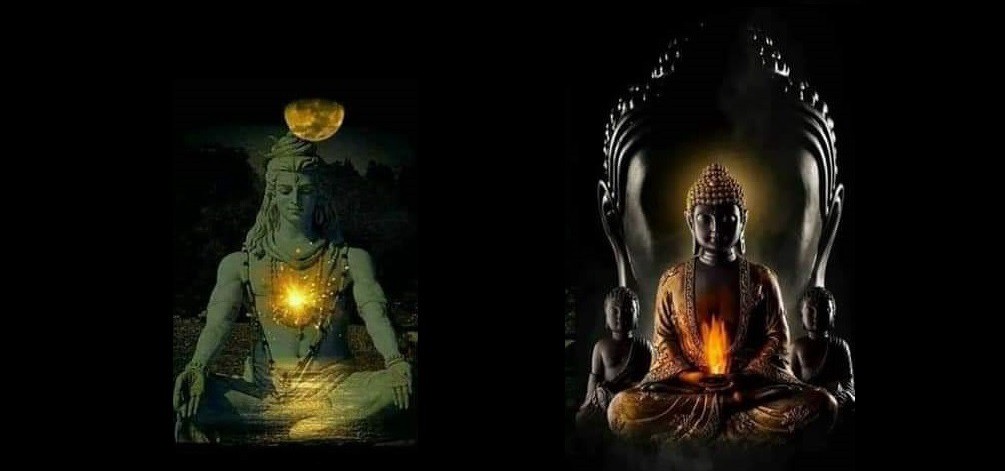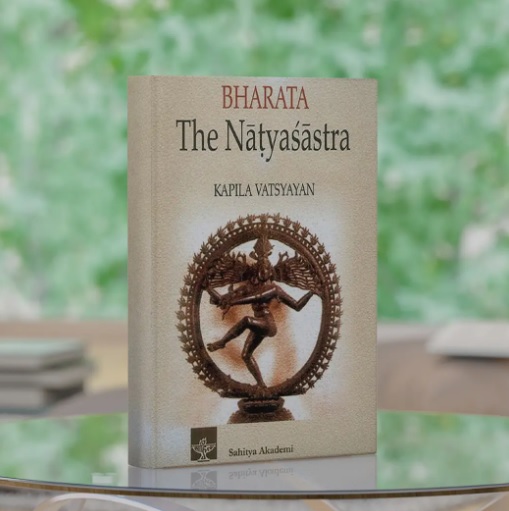- Visitor:29
- Published on:
The Advaita Vedanta Critique of Buddhism: Absolute Idealism vs. Subjective Idealism
Sankara recognizes only the empirical reality of the external world and the individual souls. When the individual soul (Jiva) transcends its limitations (Upadhi) and realizes its identity with Brahman, it loses all senses of plurality.

In Advaitabrahmasiddhi SadanandaYati draws a distinction between the subjective idealism of the Yogacara and the absolute idealism of Sankara. Both are idealists. They recognize the ontological reality of consciousness (Vijnana) only. But there is a substantial difference between them.
The Yogacara holds that cognitions are many and non-eternal.
But Sankara holds that there is only one, eternal, universal consciousness or Brahman.
The former is a subjective idealist or sensationist.
The latter is a monist or absolute idealist.
The discrete, momentary cognitions in individual streams of consciousness (santana) constitute the reality of the Yogacara. The one, eternal, universal consciousness or Brahman constitutes the reality of Sankara. The Yogacara is a subjective idealist. He reduces the so-called external objects to mere cognitions of the individual minds or psychic continua. He is a sensationist like David Hume and J.S. Mill. He does not recognize the existence of the permanent self apart from a series of momentary sensations, feelings, and ideas. Nor does he admit the reality of external objects distinct from, and independent of, subjective cognitions. He is emphatic in his denial of external objects. They are nothing but internal forms of cognitions which appear to consciousness like external objects owing to an illusion. Sankara, on the other hand, recognizes the existence of external objects distinct from, and independent of, subjective cognitions. He is emphatic in asserting the existence of external objects. His absolute idealism is not mentalism or subjectivism.
He recognizes the Absolute (Brahman) alone as the ontological reality. The Absolute is pure identity. It is not identity-in-difference like the Absolute of Hegel.
But still Sankara is not prevented from recognizing the empirical reality (Vyavaharikasatta) of external objects and individual souls (Jiva). Deussen rightly observes: “Just as Kant, along with transcendental idealism, maintained the empirical reality of the external world, and defended it against Berkeley, so the Vedantins are not prevented by their doctrine of Ignorance as the foundation of all Being expanded in name and form from maintaining the reality of the outer world against the Buddhists of idealistic tendencies.”

Sankara recognizes only the empirical reality of the external world and the individual souls. The external objects are real for all practical purposes of our life. They serve all practical needs. But they are unreal from the standpoint of the Absolute. When the individual soul (Jiva) transcends its limitations (Upadhi) and realizes its identity with Brahman, it loses all senses of plurality.
The Jivas and external objects are not real Sub Specie aeternitatis in the language of Spinoza. They have only an empirical reality. The Yogacara regards the objects of perception such as blue and the like as internal forms of cognitions only which appear like external objects. Sankara, on the other hand, admits the empirical reality of external objects such as blue and the like, which are distinct from cognitions and indefinable (anirvacaniya) in nature.
Further, according to Sankara, empirical objects are known through their practical efficiency (artha kriya). But, according to the Yogacara, objects are mere determinations of cognitions which have practical efficiency.
Jayanta Bhatta also distinguishes between the absolute idealism of Sankara and the subjective idealism of the Yogacara. Both of them are idealists. They recognize the reality of consciousness only. They deny the absolute reality of anything independent of consciousness. But there is a world of difference between them. Sankara’s absolute reality is one, indifferenced, eternal consciousness. The Yogacara’s absolute reality is a plurality of momentary cognitions with no permanent self-abiding in them and with no external objects to produce them.
He does not admit the reality of one, infinite, eternal, self-luminous consciousness or Brahman, but of a beginning less series of momentary cognitions which appear and disappear in individual minds or streams of consciousness.
Sankara’s Criticism of the Subjective Idealism (Buddhism)
- Firstly, Sankara does not offer any direct criticism of the first argument of the Yogacara that an external object cannot exist, for if it exists it must be of the nature of the nature of atoms or an aggregate of atoms but it can be neither. Sankara urges that an external object does exist since it is distinctly perceived by all. In every act of perception, we do perceive an external object such as a post, a wall, and the like. We cannot deny the existence of an external object which is actually perceived. It is as absurd to deny the existence of an external object which is actually perceived through a sense-organ as to deny the act of eating and feeling satisfied when one is actually taking his meal and feeling pleasure. In other words, our perception clearly testifies to the existence of an external object.
Berkeley argues that the existence of a sensible object consists in being perceived – esse is percipi – and therefore it is an idea of the mind. Sankara, on the other hand, argues that an object is perceived because it actually exists external to the mind; an object is distinctly perceived as existing independent of the act of perception. No one can argue a fact of experience out of existence.
The Yogacara may argue, like Berkeley, that he does not deny the consciousness of an object, but he denies the consciousness of an object as distinct from the act of cognition: we never perceive an object as distinct from the act of perception: hence they are identical with each other. Sankara replies that the Yogacara gives here a false account of the testimony of consciousness. Our perception clearly testifies to the existence of an object independent of the act of perception. The externality of the object to our perception must be admitted on account of the very fact of perception. No one perceives a post, or a wall as a mere perception but as an object of perception.
Even the Yogacara tacitly assumes the existence of external objects when he argues that internal cognitions appear as if they were external objects, though really there are no external objects. If he had no idea of externality at all, he could not assert that internal cognitions appear as if they were external objects. We can assert that a post appears like a man only when we already know what a man is. So we can assert that internal cognitions appear as if they were external objects only when we already know what eternal objects are. If external objects do not exist at all and are never perceived, the Yogacara cannot assert that internal cognitions appear like external objects. It is as absurd as to assert that Visnu Mitra appears like the son of a barren mother!

Hence if we accept the clear testimony of our consciousness we must admit that in an act of perception the object is manifested to consciousness as something really external, and not as if it were external. But the Yogacara may contend that, because it is not possible for an external object to exist he holds that an object of perception which is nothing but a subjective cognition appears as if it were external.
To this Sankara replies that the Yogacara has no right to reject the clear testimony of consciousness and rely on abstract arguments. Reasoning must be based on the facts of experience: it must not wander away from them and spin out a system of philosophy which has no foundation in reality. Experience cannot be made to conform to reasoning. Reasoning must be based on experience.
The possibility or impossibility of an object depends only upon the operation or non-operation of the means of right knowledge, while the operation or non-operation of the means of right knowledge does not at all depend upon the abstract possibility or impossibility of an object. Whatever is apprehended by perception and the like is possible: and whatever is not apprehended by any means of right knowledge is impossible. Is, then, an external object possible? Certainly it is possible since it is apprehended as existing external to, and independent of, consciousness by all the means of right knowledge such as perception and the like. What is clearly apprehended by all the means of right knowledge can never be held to be impossible. Possibility is determined by actuality. Actuality is not determined by possibility.
The Yogacara goes against the unequivocal deliverance of consciousness when he argues that an external object is not possible because it is neither different nor non-different from atoms.
Sankara proves the existence of an external object on the strength of the clear testimony of consciousness. He does not rebut the dilemma of the Yogacara. He simply points out that the Yogacara contradicts the verdict of consciousness when he denies the existence of an external object on the strength of abstract arguments. He has no right to reject experience in favor of an idle dilemma to prove the non-existence of an external object.
- Secondly, the Yogacara argues that cognitions are said to have the same forms as those of their objects, but since the different forms of cognitions are sufficient for practical purposes of our life, it is needless to assume the different forms of the so-called external objects.
The different forms of cognitions are necessary, and they are facts of experience. But the different forms of the so-called external objects are absolutely unnecessary, and to assume their existence is a gratuitous hypothesis.
But Sankara urges that cognitions cannot have the same forms as those of external objects if the objects do not really exist. Moreover, the objects are actually perceived as external to, and independent of, the act of perception, and so their existence can never be denied. We cannot legitimately invoke the Law of Parsimony to deny the existence of the facts of actual experience.
Reid appealed to the common sense of mankind to prove the existence of the external world. “The universal belief to mankind is,” he says,” that the immediate object of the mind in perception is the material reality itself, and that as we perceive that object under its actual conditions, so we are no less conscious of its existence, independently of our minds, than we are conscious of the existence of our own mind, independently of external objects.
The modern realists also appeal to “that primordial common sense which believes in a world that exists independently of the knowing of it”. “My experience, says Alexander, “declares the distinct existence of my object from my mind is attested by experience itself. This is a truth which a man need only open his eyes to see.”
- Thirdly, the Yogacara argues that we invariably apprehend an act of perception and an object of perception together. We never perceive an object of perception apart from the act of perception. So they are identical with each other: the object is not distinct from its cognition.
But Sankara urges that inseparability in perception is no proof of identity. It is true that an object of perception can never be perceived apart from the act of perception. But from this it does not necessarily follow that an object is identical with its cognition.All that it proves is that the cognition is the means (Upaya) and the object is the end (Upeya) so that there can never be a cognition unless there is an object.
There can be no cognition without an object because it is the means of apprehending an object. If the object is non-existent the cognition cannot apprehend anything. Cognition without an object is impossible. The very existence of cognition presupposes the existence of an object. So there can be no perception unless there is an object of perception. Thus an object of perception can never by identical with an act of perception: they are distinct from each other.
Govindananda argues that the distinction between an object and its cognition is clearly perceived by the self. So their identity can never be proved by the fact that they are always perceived together.
A visible object such as color is always perceived together with light; it can never be perceived apart from light. But still color is not identical with light. Likewise, an object is never perceived apart from its cognition. But this does not prove that an object is identical with its cognition. They are always perceived together because there is a uniform relation between them, the cognition being the percipient subject (Grahaka) and the object being the perceived object (Grahya). The perceptible object is not identical with the percipient cognition: they are distinct from each other. But thought they are distinct from each other they are related to each other as the percipient and the perceived.
Moreover, Sankara argues the consciousness is common to different cognitions: the difference in their contents is due to the difference in their objects. Different objects modify consciousness in different ways, and give rise to different cognitions. In the cognition of a jar and the cognition of a cloth there is a difference between the jar and the cloth which are the objects of the cognitions and qualify consciousness in different ways: but there is no difference in the consciousness which is common to both the cognitions and is qualified by the objects, even as in a black cow and a white cow there is a difference between blackness and whiteness which are the qualifications of the class-essence of cow (gotva), but there is no difference in the class-essence of cow which is common to both.
Thus the consciousness which is qualified by different objects such as a jar and a cloth is different from the objects, and the objects also which qualify consciousness in different ways are different from consciousness. Again, the same object gives rise to two cognitions. We have the perception of a jar and the recollection of it. Thus an object can never be of the nature of consciousness. Consciousness and object can never be identical with each other; they are different from each other. If there were no external objects there would be no difference in acts of cognition. The variety of cognitions is due to the variety of objects.
Further, the Yogacara is an advocate of the doctrine of momentariness. So he regards all ideas as momentary: they cannot last for more than one moment. Hence two successive momentary cognitions which vanish as soon as they become objects of consciousness cannot be related to each other as the apprehending subject (Grahaka) and the apprehended object (Grahya). When the cognition a has come into existence the succeeding cognition b has not yet come into being. So a cannot apprehend b and b cannot be apprehended by a. And the succeeding cognition b can never apprehend the preceding cognition a. Thus the distinction of subject and object can never fall within consciousness as wrongly held by the Yogacara.
Moreover, the Yogacara recognizes the existence of cognitions because they are perceived. Sankara urges that he should equally recognize the existence of external objects because they also are perceived as independent of cognitions. External objects are no less perceived than cognitions. So they have as much claim to existence as cognitions. But the Yogacara may argue that cognition are self-luminous while the so-called external objects are not so. In other words, cognitions apprehend themselves.
So the Yogacara admits the existence of cognitions but not of the so-called external objects. But Sankara urges that cognitions cannot be regarded as self-luminous or self-apprehending, for acts of cognition can no more be objects of their own activity than fire can be the object of its own activity, viz. burning. The act of cognition must, by its very nature, be distinct from the object of cognition; they can never be identical with each other. It is self-contradictory to hold that a cognition acts upon itself and apprehends itself as its own object.
It is very strange that the Yogacara refuses to admit the existence of an external object though everyone perceives it through a cognition which is distinct from the object itself.
The Yogacara may argues that if cognitions are not self-luminous but are apprehended by something distinct from them, that also will require something else to apprehend it and so on ad infinitum. Thus it will commit us to infinite regress. But Sankara replies that cognitions are apprehended by the witness self (Saksin) which is self-luminous. Cognitions are fleeting but the witness self is permanent. Cognitions are presented to the self, but the self is self-luminous. So there is no infinite regress in the Vedantist doctrine. The witness self and cognitions are essentially different in nature so that they are related to each other as the knowing subject and the known object. No one can deny the existence of the self since it is the very presupposition of all experience. It bears testimony to its own existence. The individual cognitions, according to the Yogacara, are discrete and momentary; they come into being and pass away. Hence they must require one, permanent, intelligent principle or the self to witness the production and destruction of all these cognitions which are not self-luminous.
- Fourthly, the Yogacara likens waking perceptions to dream-cognitions and explains them both by subconscious impression (Vasana) without the help of external objects. But Sankara points out that there is a false analogy here. Dream-cognitions are essentially different in nature from waking perceptions. Dream-cognitions are contradicted by waking perceptions. But waking perceptions are not contradicted by any other empirical experience. Besides, dream-cognitions are of the nature of collection while waking perceptions are of the nature of perception. And the different between recollection and perception lies in the fact that the former arises in the absence of an external object while the latter arises in the presence of an external object. Thus waking perceptions can never be explained without the help of external objects.
- Lastly, the Yogacara argues that the variety of cognitions (Jnanavaicitrya) is not due to the variety of external objects but to the variety of subconscious impressions (Vasanavaicitrya). But Sankara urges that on the Yogacara view there can be no subconscious impressions at all since they arise from perceptions of external objects which are denied by him. When perceptions of objects pass out of the field of consciousness they leave subconscious impressions behind in the mind. But if there are no perceptions of external object at all, there can be no subconscious impressions is due to the variety of perceptions of objects.
Govindananda elaborates the argument of Sankara further. We have perceptions of new objects without subconscious impressions; they are never produced by subconscious impressions without external objects.
There are subconscious impressions when there are already perceptions of external objects and there are no subconscious impressions when there are no previous perceptions of external objects. Thus the Yogacara in trying to account for the variety of perceptions by the variety of subconscious impressions is tacitly assuming the existence of external objects without which subconscious impressions are not possible.
The Yogacara assumes the hypothesis of an infinite series of subconscious impressions and perceptions related to each other as causes and effects. But Sankara urges that, if a single subconscious impression cannot account for a particular perception but itself depends upon a previous perception, an infinite series of subconscious impressions cannot account for the variety of perceptions. It simply multiplies the difficulties to infinity. If a single member of the infinite series cannot account for the origin of perception, an infinite number cannot do it either.
The Yogacara postulates an infinite series of subconscious impressions instead of a variety of external objects to account for a variety of perceptions. But he utterly fails in his attempt to do so. His denial of the external world leads to a total collapse of practical life.
The Yogacara proves his position by the following positive and negative judgements. Whenever there is a variety of subconscious impressions there is a variety of perceptions although there is no variety of external objects, and wherever there is no variety of subconscious impressions there is no variety of perceptions. But Sankara urges that both these judgements are false, since subconscious impressions can never be explained without previous perceptions of external objects. On the contrary, the existence of external objects can be proved by the following positive and negative judgements. We have perceptions of external objects without previous subconscious impressions when external objects are present.
But we cannot have subconscious impressions unless we had previous perceptions of external objects. Thus these judgements clearly establish the existence of external objects.
Further, subconscious impressions are nothing but latent dispositions, and they cannot possibly exist without a substratum. But the Yogacara does not believe in any permanent substratum of subconscious impressions, viz. the self. He believes, indeed, in Alayavijñana or the series of self-cognitions in addition to pravrtti vijnana or the series of object-cognitions within the stream of consciousness. But his Alayavijñana is as momentary as pravrtti vijnana, and consequently, it cannot be the substratum of subconscious impressions any more than the latter.
If he regards his Alayavijñana as permanent, he abandons his doctrine of momentariness. Thus the Yogacara makes a vain attempt to explain the variety of perceptions by the variety of subconscious impressions, since they are not possible without previous perceptions of external objects, and without a permanent substratum, viz. the self, both of which are denied by him.
Source: Pg. 225 – 241, Indian Realism, Jadunath Sinha, MBLD
Center for Indic Studies is now on Telegram. For regular updates on Indic Varta, Indic Talks and Indic Courses at CIS, please subscribe to our telegram channel !
- 14 min read
- 0
- 0










